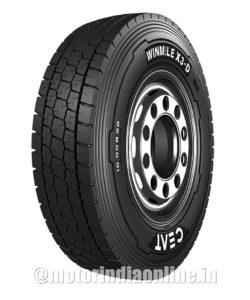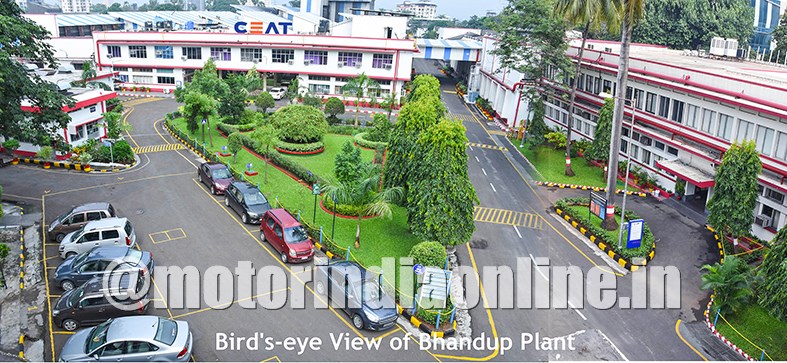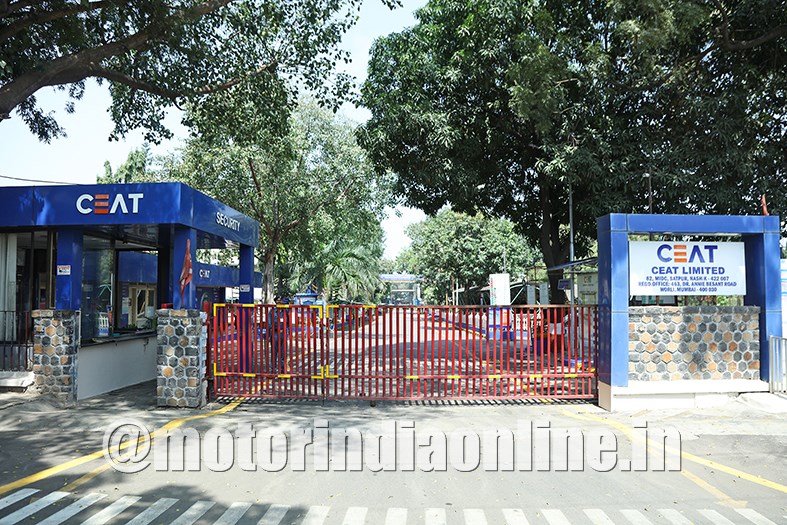In an exclusive interview with Rajesh Rajgor, Chief Operating Officer Arnab Banerjee, CEAT Ltd., exudes optimism and foresight towards his company’s near future. With investments in research and development and ramp-up in capacities to bring the right product mix, CEAT is rising up to the challenge
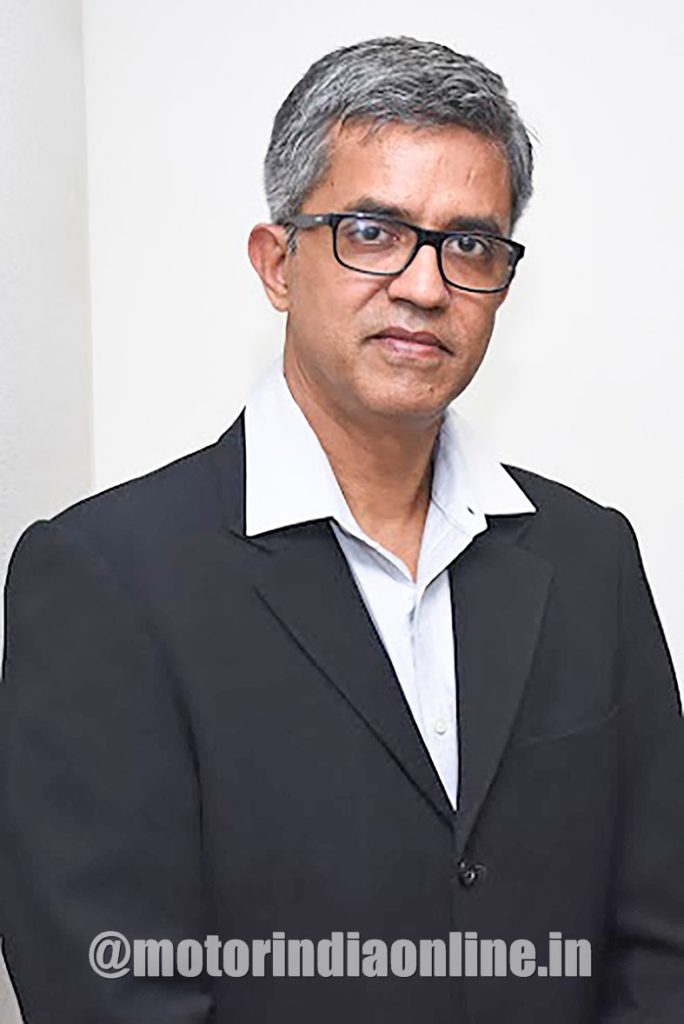
Established in 1958, CEAT, the flagship company of RPG Enterprises, today produces over 15 million tyres a year and offers the widest range of tyres to all segments. The company manufactures world-class radials for heavy-duty trucks and buses, light commercial vehicles, earthmovers, forklifts, tractors, trailers, cars, motorcycles and scooters as well as auto-rickshaws.
Excerpts from the interview:
How has business been for CEAT this financial year? Given the challenging market conditions at present, how are you coping with the muted OEM demand? And are sales in the aftermarket sector coming as a good respite for tyre makers like your company?
OE volume drops have been as per their production cuts. As we were present in OE new launches, our volumes were somewhat cushioned as new launches have done better even in the present muted business environment. We have grown or held market share in replacement and the market itself has been growing in low single digits.
How are your five operational Indian facilities functioning? How much of their total capacity are they running at? What is the status of your Chennai plant?
Our Chennai facility will start ramping very soon. Halol and Nagpur have very good capacity utilisation and we are adding capacity at both places. Bhandup and Nashik put together are running below full capacity because of lower demand in bias categories.
Could you please elaborate on the total production capacity? What is your capacity for truck and bus bias and radial tyres?
Our TBR capacity is ramping up to approximately 120,000 tyres per month. Our overall capacity is just over 1,000 TPD, including outsourced goods. Our PC and UV capacity is 5 lakh tyres per month, which will ramp up to 13 lakh tyres with the Chennai plant.
With growing competition from home-grown and 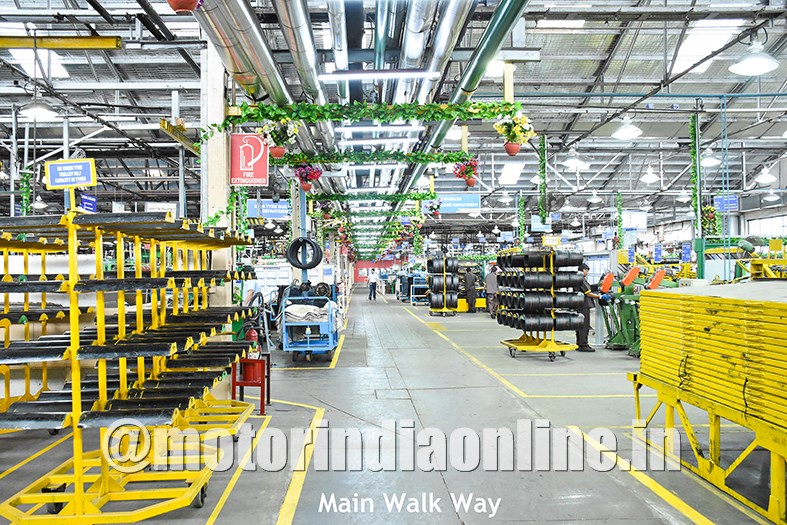 multinational tyre brands on one side and aggressive approach from low-cost Chinese brands on the other, what is CEAT’s strategy to tackle such competition? Can you pick out three main areas or aspects which differentiate your brand from the rest in the market?
multinational tyre brands on one side and aggressive approach from low-cost Chinese brands on the other, what is CEAT’s strategy to tackle such competition? Can you pick out three main areas or aspects which differentiate your brand from the rest in the market?
Our brand is gaining on salience as well as on relevance in the right target group. In terms of perception, we score very high on safety as well as life of the tyre. These are highly relevant brand attributes amongst our target group of customers. We are steadily improving our service aspects which are very relevant in the commercial vehicle category.
What is CEAT’s capability on research and product development? Given that your competition comes from around the world, how do you ensure adoption of the latest technology and best practices to keep pace with the dynamics of the fast-changing market?
We have a world-class infrastructure at Halol by way of development and testing equipments. Our team consisting of best minds from India and global experience at our Frankfurt office gives us the edge in forging ahead in emerging trends such as connected vehicles, electric vehicles as well as for continuous improvement for our existing customers. We shall continue to invest in research and development.
How is radialisation catching up across segments? While we suppose it is faster in the passenger car space, how are radials being accepted in the truck and bus segment? How does CEAT view this trend and how are you gearing up for the same?
The passenger segment is almost entirely radialised. About 45-50% of the truck and bus segment is radialised and this is slated to progress further. Our investments at Chennai and Halol are in passenger radials and truck bus radials, respectively. All our incremental investment is in radial capacity, except 2W which remains largely as bias.
What is CEAT’s market share in the truck and bus and passenger car space in the domestic market? How strong are you in two-wheeler, three-wheeler and off-road, construction and agriculture sectors?
CEAT has a strong presence in the two-wheeler category where we are amongst the top two brands in most markets. We are slated to gain share in the passenger category once our Chennai capacity comes on stream. We have rapidly started gaining share in the TBR category as Halol capacity is ramping up.
How strong is your aftermarket network at present? How many CEAT centres are operational currently? Do you have dedicated outlets for the truck and bus segment?
We have a dealer and a distribution network which is arguably one of the strongest in terms of reach. We have about 300 CEAT shops at present and we are piloting with dedicated service outlets for the truck and bus category.
How is your presence in overseas’ markets? Which are your key target segments and regions and how much of your overall revenue do you earn from exports?
We were traditionally strong in the nearby markets of bias truck and light truck tyres. Our product – market mix is gradually changing towards radial tyres in Europe and Asian markets. About 12% of our revenue comes from our international business. We develop local products with local insights for our international markets and design local marketing mix which is relevant for the local market.
What is your outlook for the Indian tyre market for the medium to long-term? What do you consider as the three main growth drivers and top three challenges for the industry? How is CEAT positioned in this regard?
The medium-term outlook is tepid. The long-term outlook is definitely positive with low penetration of passenger vehicles and increasing income levels across the country. The growth pillars for the commercial vehicle category will be government spending and enhancement of economic activity such as mining and transportation of general goods. It will also depend on easing of lending by banks and NBFCs. And the increase in axle norms and reduced cycle time for long haul transportation post-GST implementation has dampened demand in the short term.
This will ease out as well. Implementation of BS-VI norms may lead to some pre-buying in FY20 followed by a temporary contraction of demand in early FY21. For the passenger category, it will be based on monsoons, which has been good so far, and improvement in consumption sentiment. With better infrastructure people shall travel longer distances and passenger vehicles’ usage shall increase as many people use it for their regular business as well. With new vehicle launches by OEMs, interest in vehicle ownership gets a boost as well.
With shared economy, car ownership may come down in urban areas, especially amongst millennials, but vehicle utilisation shall go up manifold. So, requirement of tyres may keep growing handsomely. CEAT is very well-positioned to take advantage of the increase in passenger category demand due to our dominating presence in the 2W category and growing market share in the PC and UV category. We are coming up with new and improved products in all segments, which will lead to continuous improvement in our market share.
What are CEAT’s medium to long-term plans or targets to overtake competition and scale new heights?
We are continuously investing in our brand and in research and development even in a slowdown phase. We are adding significant capacities in TBR, PC and UV, 2W and OTR categories. We have made significant forays into key international markets which shall see buoyancy once our supply lines grow stronger. We are also investing in new capabilities such as connected products, digital transformations, and supply chain automation. We are looking at strong market share growth in passenger radials, two-wheeler tyres, agriculture radials and in truck bus radials in the coming five years.
